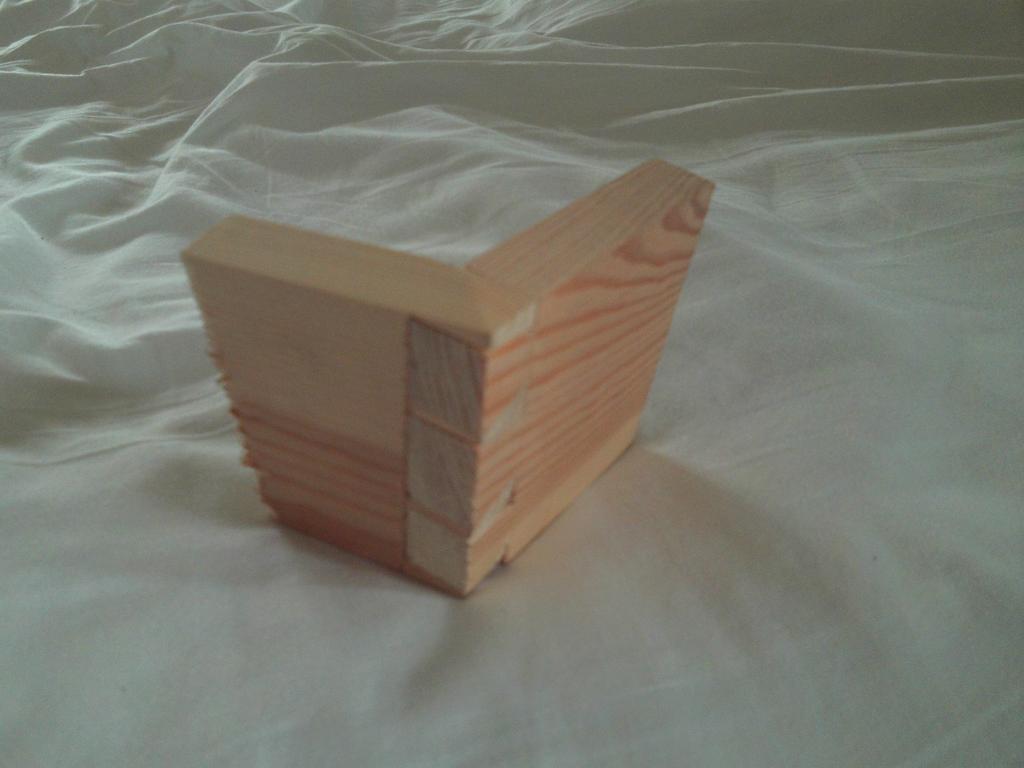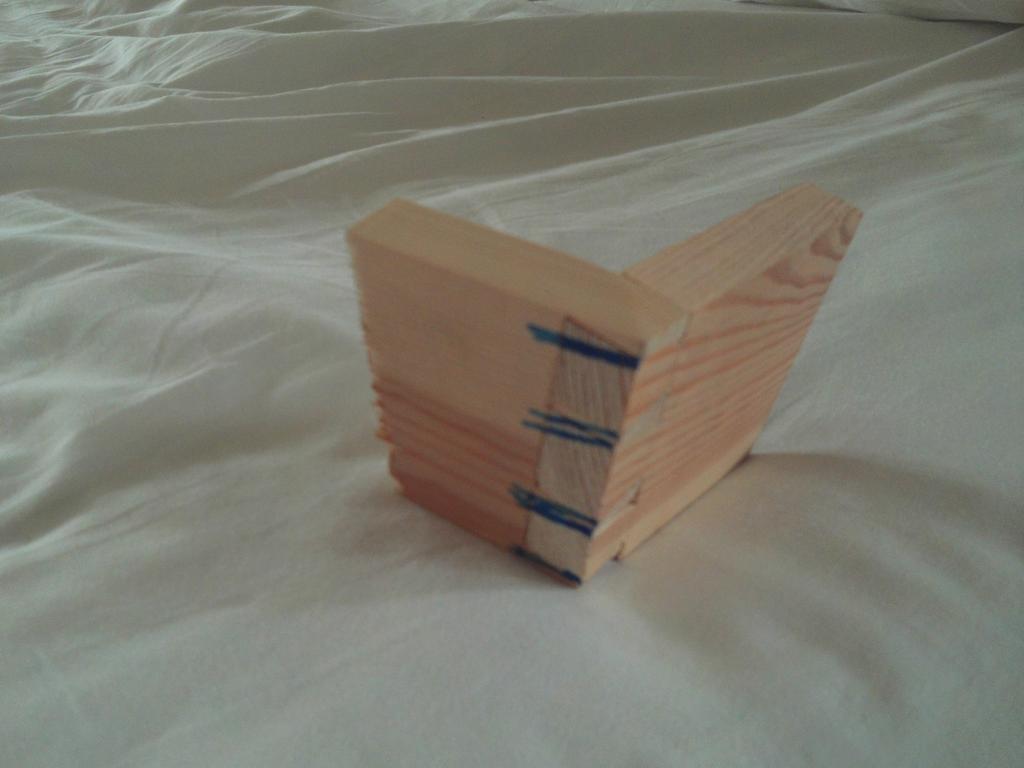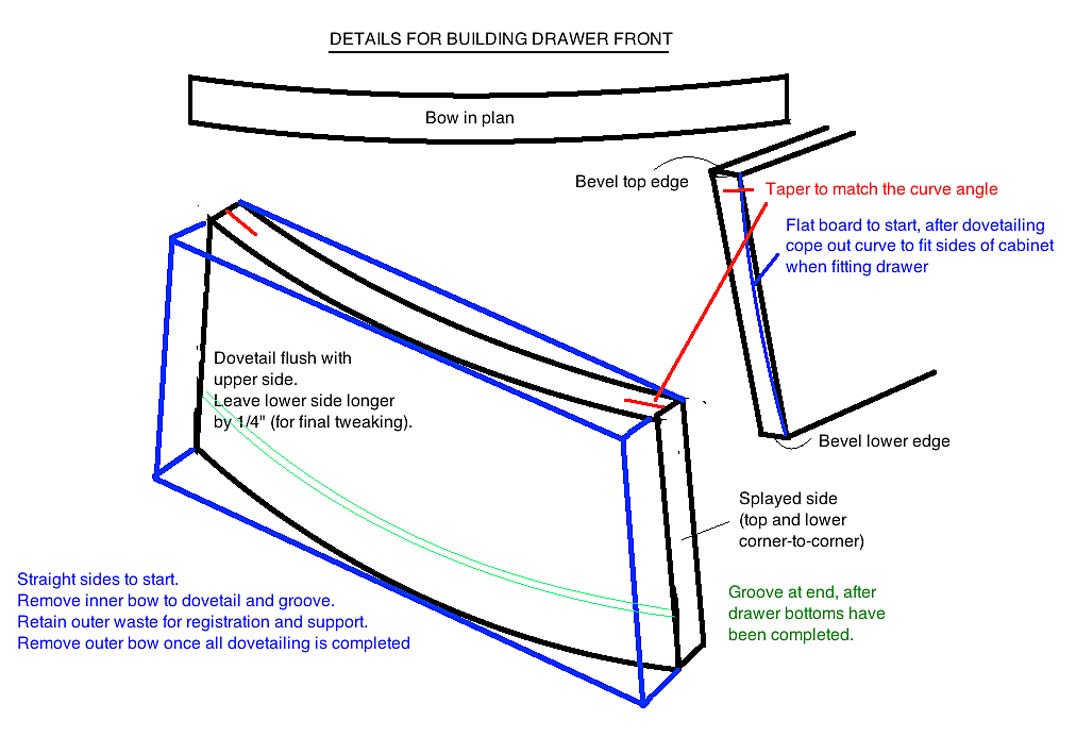Does anyone have any tips for cutting dovetails at compound angles?
I want to make a box with all 4 sides sloping outwards at the top, away from vertical. The tail boards slope will not be the same as the pin boards slope. I tried a test joint yesterday. I had no clue how to lay out the joint and eventually did it freehand. I would prefer a process that I could follow to produce reliable, good-looking joints.
On the plus side my test joint is strong and lies nicely flat on the bench. It isn't too bad and could probably be cleaned up to look almost acceptable. With a bit of practise ...
On the down side the joint is a long way from square and there is no way I could do 4 joints like that to make a box. I don't know where I went wrong.
I want to make a box with all 4 sides sloping outwards at the top, away from vertical. The tail boards slope will not be the same as the pin boards slope. I tried a test joint yesterday. I had no clue how to lay out the joint and eventually did it freehand. I would prefer a process that I could follow to produce reliable, good-looking joints.
On the plus side my test joint is strong and lies nicely flat on the bench. It isn't too bad and could probably be cleaned up to look almost acceptable. With a bit of practise ...
On the down side the joint is a long way from square and there is no way I could do 4 joints like that to make a box. I don't know where I went wrong.









































